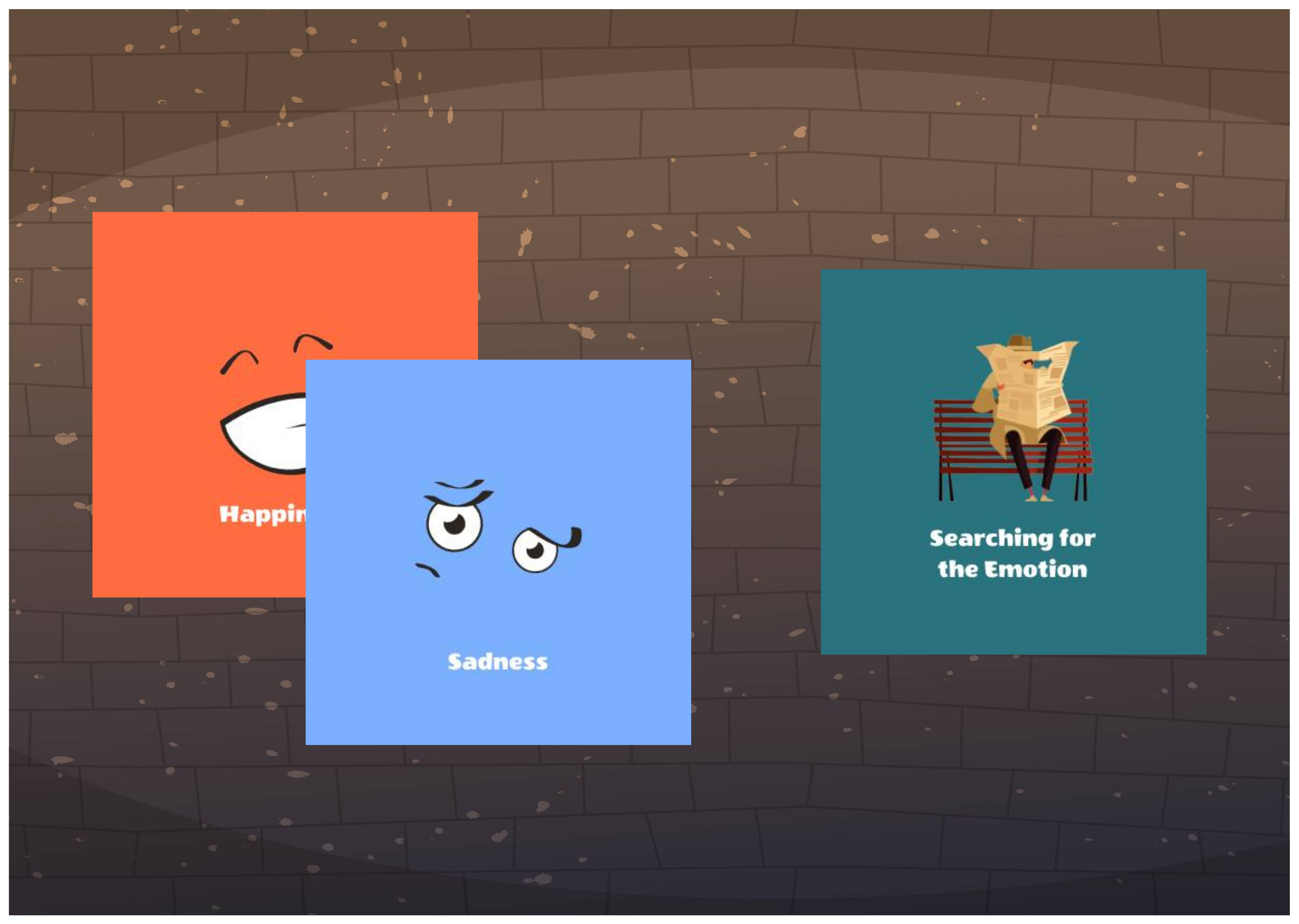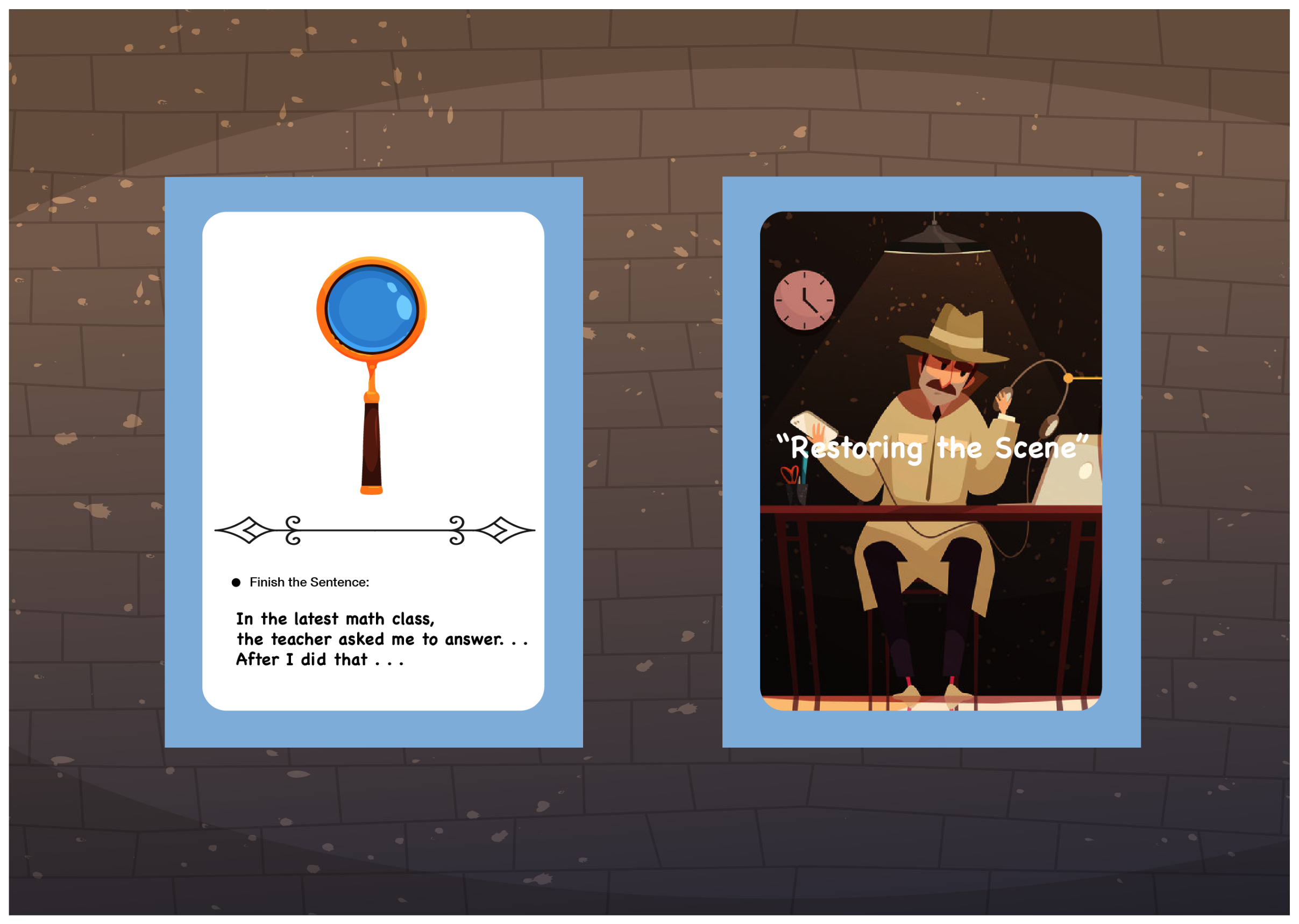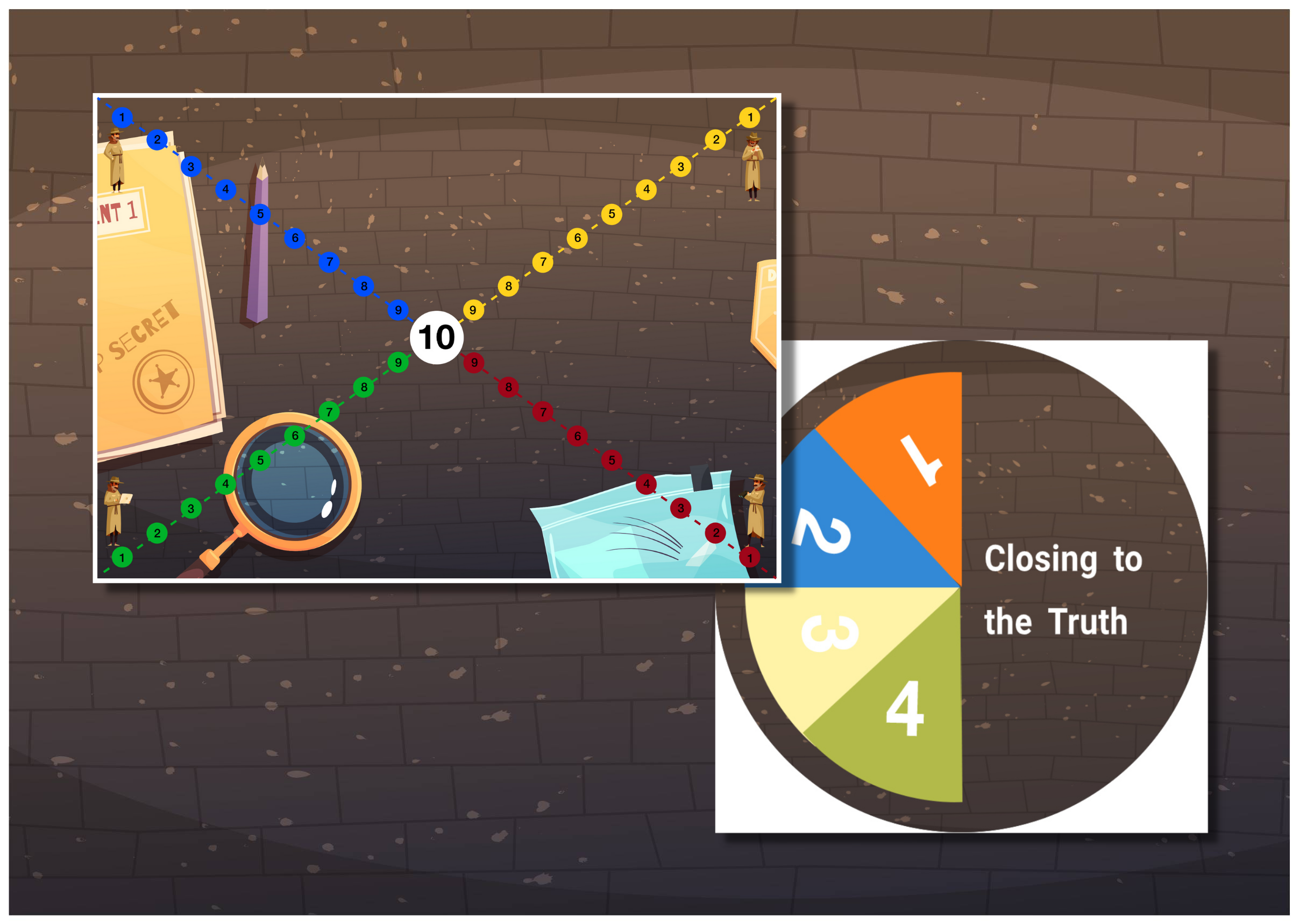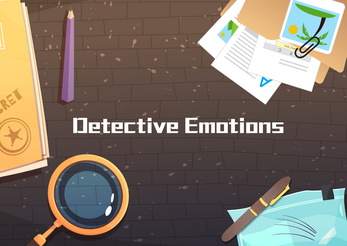Detective Emotions - Yuxi Huang
A downloadable game

Help! Cunning EMOTIONS are running around!
Do not worry, our professional DETECTIVES are in the area: search for the emotion, restore the scene and finally find the "true face" of the emotion.
Need
1. Mastering how to express emotions is essential for Grade 1 children.
Studies (Aldridge et al., 1997) have shown that children have limited vocabulary related to emotions: most aged six to seven cannot express complex terms such as anxiety, even for eleven-year-old children, they cannot easily convey the emotions that adults share.
2. The epidemic causes Grade 1 children who take online lessons at home rarely have the opportunity to observe others and learn how to express emotions
Processing emotions involves children’s social cognitive abilities. As social animals, humans acquire emotion knowledge through observation and imitation (Olsson et al., 2007; Frith et al., 2012). After the outbreak of the COVID-19 epidemic (UNESCO, 2020), children who take online lessons at home rarely have the opportunity to observe face-to-face and imitate the emotional expressions of others. With the increase in the negative news such as the number of infections, deaths, and school closures, parents also need to communicate more with their children staying at home all day, to help to balance their lives and studies, and calm their anxiety and fears (Garbe et al., 2020).
Design Description
Detective Emotions is designed for Grade 1 students, who have online lessons at home and can play it with their family when they cannot go out due to the epidemic. This game will help children learn to actively express emotions, and will help both sides (parents and children) understand their emotions.
Detective Emotions consists of five components:
1. twenty-four emotion token cards
The emotion card is called “Searching for the Emotion” in the game, each player has six basic emotions in hand: “Happiness, Surprise, Fear, Sadness, Disgust, Anger (Shiota et al., 2016)”.

2. twenty question cards
The question card is called “Restoring the Scene” in the game, there are 20 cards in total, and each card has an open question such as “Before going to bed, I will think … ”.

3. four turntables
The turntable is called “Closing to the Truth”. There is one for each player, which is used to show the intensity of a certain emotion of the player during the game.

4. four chess pieces and a game map
The game map can be folded into four-folds, and the color of the route above corresponds to the color of the chess pieces.
How to Play
[The number of players]
two to four people
[The time for clearance]
About 30 minutes to an hour
[Suitable for]
Children from 6 to 12 years old (especially for Grade 1) with their families
[Rules]
1. Every player has a set of “Search for the Emotion” cards (six different emotions) in hand, each one chooses a chess piece before the start: the red is the dealer, the blue is the No.1 player, the green is the No.2 player, the yellow is No.3 player
2. The dealer blindly draws a card from the “Restoring the Scene” card stack, answers the question without directly disclosing the emotion term, then chooses a “Search for the Emotion” card meeting his/her description and turns it over on the game board. The left players separately choose a “Search for the Emotion” card he/she thinks fit the dealer’s description, then revealing the answer. The player who agrees with the dealer’s choice will add 1 point, and the dealer will not add a point.
3. Next, the dealer uses the turntable to secretly determine the intensity of the same emotion. After setting the pointer, he/she only can say 3 sentences, describing the emotion in detail, to help other players adjusting their own turntables for getting closer to the intensity of his/her choice. Finally, revealing the answer. As long as there is a player whose intensity level is the same as the dealer’s, both that player and the dealer will add 1 point. The player who reaches 10 points center on the game map wins the game.
MDA Framework
[Mechanics]
The mechanics of Detective Emotions are drawing cards, communicating, moving the turntable pointer and chess pieces. When Grade 1 children are playing, they can imitate and adjust suitable language patterns from their parents or playing-well peers. Children can also learn the basic and complex emotions in the process of guiding or being guided to adjust the turntable pointer.
[Dynamics]
When playing, children will use information processing abilities, especially metacognitive skills, to decode, reorganize, store and output the acquired knowledge (Sternberg, 2003). They also will “put feeling into words (affect labeling)” for description, which can help children regulate their negative emotions during the epidemic time.
[Aesthetics]
Players will become detectives in the game to find and determine emotions. The behavior of expression and description is also artistically turned into three stages of solving crimes: “Search for the information”, “Restore the scene”, “Find the emotions”.
1. Fellowship: four players form a small group to actively participate in the game, and everyone learns through communication;
2. Challenge: in order to win next time, each player needs to constantly improve his/her ability to understand and express emotions;
3. Expression: when describing emotions, players will use creative language ideas to remind others, such as recite poems or sing songs.
Reflection and Future Improvements
Detective Emotions have successfully designed the two concepts of game and education together. The game does not force Grade 1 children to relearn a certain emotion, but allows them to combine past experience to actively understand and adjust their expression in order to win. I think this design has some spark of constructionism. But it still needs improvements, for example, the images on the question cards are related to detectives that do not match the text. It will be better if the two parts are related, for better prompting the player and reducing the burden of information processing.
| Status | Released |
| Category | Physical game |
| Rating | Rated 5.0 out of 5 stars (1 total ratings) |
| Author | Yuxi Huang |
| Tags | Board Game |

Leave a comment
Log in with itch.io to leave a comment.